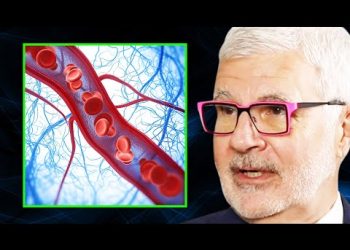Synthesizing Diet and Exercise for Belly Fat Reduction
Dr. Mindy Pelz aims to blend her expertise on belly fat reduction into a refined strategy, integrating both diet and exercise. This article decodes the insights inspired by her approach to managing belly fat, which is often misunderstood yet crucial for holistic health.
Understanding Belly Fat
Belly fat is not just a consequence of lack of discipline; it represents your body’s response to excessive glucose. Consuming too many sugary foods, carbohydrates, and toxic ingredients leads to glucose accumulation, which the body, unable to utilize entirely, stores as fat. Therefore, understanding this mechanism is fundamental before addressing belly fat.
Belly Fat and Hormones
Particularly, belly fat serves as a storage for excess hormones like estrogen and cortisol. For instance, menopausal women often experience a surge in belly fat due to hormonal imbalances. Chronic stress may also trigger cortisol accumulation in belly areas, emphasizing the role of hormone management in fat reduction.
The Impact of Toxins and Diet Drinks
Diet drinks and other synthetic chemicals add another layer of complexity. These substances, laden with artificial ingredients, lead to toxin build-up in belly fat. Thus, these seemingly “light” options can ironically contribute to weight gain over time.
The Ketobiotic Diet Approach
Dr. Pelz advises adopting a low-carb, ketobiotic diet, which is distinguished by 50 net carbs per day. This diet emphasizes not extreme carb reduction but a balance that prevents drastic blood sugar spikes, ultimately minimizing glucose storage.
Incorporating Fiber
A crucial component of this dietary approach is increasing fiber intake. Raw vegetables and other fibrous foods support the microbiome’s estrobolome, aiding in hormone breakdown and preventing excess storage. This aspect is particularly important for individuals on hormone treatments or dealing with synthetic estrogen exposure.
Supporting Liver Function with Bitter Foods
Bitter foods such as ginger, lemon, and dandelion greens boost liver function, the body’s main detox organ. These foods help clear not just hormones but also the toxins stored in belly fat, further reinforcing the ketobiotic principles.
The Role of Protein and Metabolism
While protein is vital for metabolism and muscle growth, Dr. Pelz emphasizes that its intake should follow initial dietary adjustments. For those with metabolic issues, excessive protein intake can potentially lead to weight gain rather than its reduction.
Implementing HIIT Exercises
High-Intensity Interval Training (HIIT) is recommended for its efficiency in fat burning, particularly in the belly area. This form of exercise stimulates growth hormone, enhancing the body’s fat-burning capacity.
Resistance Training and Relaxation Activities
Complementary to HIIT, strength training builds muscle and boosts insulin sensitivity. Additionally, incorporating calming activities like nature walks is essential to manage cortisol levels, counteracting stress-induced weight gain.
The Takeaway
Addressing belly fat requires a nuanced understanding of its underlying causes – from hormone imbalances to lifestyle choices. By synthesizing dietary measures and exercise regimens, individuals can effectively tackle the multifaceted nature of belly fat. The strategic blend suggested by Dr. Pelz focuses on fostering overall health while targeting specific fat storage challenges.











